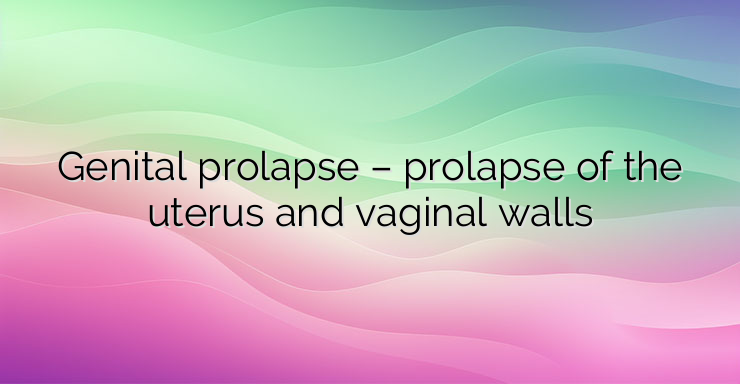Hey there! Ever wondered what genital prolapse is all about? Well, it’s basically a bunch of issues with the female reproductive organs. Picture this: the support system for the uterus and pelvic floor isn’t doing its job properly, leading to various anatomical changes. We’re talking about things like the bladder, urethra, and even the space of Douglas deciding to take a road trip into places they shouldn’t be.
So, what causes this chaos down there? A mix of factors, really. Your genetic makeup plays a big role – things like how strong your connective tissue is and what type of collagen you’re packing. Then there’s the fun stuff like hernias, varicose veins, and even flat feet making an appearance. Oh, and let’s not forget about the joy of childbirth, which can put a lot of strain on those pelvic floor muscles.
As if that weren’t enough, age decides to throw its hat into the ring. Menopause brings along tissue atrophy, weakening the support system even more. And if you thought you were safe, think again. Chronic cough, constipation, heavy lifting, and carrying around extra weight can all contribute to the party.
Now, onto the types of genital prolapse and their symptoms. There’s urethrocele, where the urethra and bladder neck decide to take a dip into the vagina, causing feelings of heaviness and frequent urges to pee. Then there’s cystocele, where the bladder decides to crash the party, leading to similar discomfort.
Next up, we have rectocele, where the rectum decides to make a grand entrance into the vagina, making it tough to do number two without a little extra help. And let’s not forget about enterocele, where abdominal organs decide they want in on the action too.
And if all that wasn’t enough, there’s uterine descent and prolapse, where the uterus decides it’s time to head south. This can cause discomfort, pain, and even difficulty peeing.
So, what’s the treatment? Well, it depends on a few things like age, overall health, and whether you want to keep those reproductive functions intact. For mild cases, a bit of therapeutic gymnastics, some estrogen, or pessaries might do the trick. But if things are getting too uncomfortable, surgery might be the way to go.


Leave a Reply